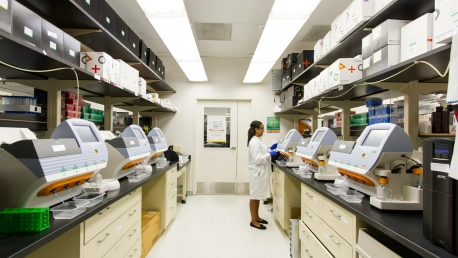The field of medicinal chemistry is undergoing a silent revolution, forever altering the landscape of pharmaceutical research and development. At the heart of this transformation is lab automation—a technology that’s swiftly transitioning from a luxury to a necessity across research laboratories worldwide. From automated synthesizers to precision liquid handling robots, laboratory automation has allowed for unprecedented efficiency and accuracy in medicinal chemistry.
The Rise of Automated Synthesis
Automation in the synthesis of new chemical entities has enabled a leap in productivity that would have been unthinkable just a generation ago. Traditionally, chemists spent countless hours meticulously crafting compounds by hand. Today, automated synthesis machines carry out these complex tasks, tirelessly combining reagents and solvents, controlling temperatures and pressures, and monitoring reactions to produce desired molecular structures with minimal human intervention.This automation is not merely a matter of convenience or speed. The precision it offers eliminates much of the trial and error that used to characterize synthetic chemistry. Reactions that once required the hands-on expertise of a skilled chemist can now be optimized quickly and replicated with exacting consistency. This has massive implications for the repeatability of experiments and the reliability of data generated, which are cornerstones of scientific progress in any discipline but are particularly crucial in the meticulous world of pharmaceuticals.
Enhanced Discovery with High-throughput Screening
Lab automation has similarly revolutionized another vital area of medicinal chemistry: the screening of compound libraries for biological activity. High-throughput screening (HTS) robots can test thousands of compounds in a fraction of the time once needed, providing a rapid assessment of their potential as drugs. These robotic systems meticulously handle and analyze minute quantities of substances, often simultaneously executing multiple assays with a precision that minimizes material waste and human error.The ripple effects of HTS automation are profound. By accelerating the discovery process, these systems allow medicinal chemists to iterate more rapidly on their hypotheses, fine-tuning compounds, and testing new analogs with incredible speed. In effect, they turn the key earlier in the lock of a disease’s molecular mechanisms, leading to faster paths to clinical trial phases and, ultimately, to the patient. As diseases evolve and new health challenges arise, the ability to respond promptly with novel therapeutics becomes ever more critical.
Future Focus: Optimizing Research with AI and Robotics
Medicinal chemistry is experiencing a quiet yet profound revolution that is reshaping pharmaceutical research and development. At the forefront is the rise of lab automation, which has shifted from being an optional tool to an indispensable asset in research labs around the globe. This technological advancement introduces robotic synthesizers and advanced liquid handling systems that enhance productivity and precision. Lab automation’s impact is evident as it streamiles processes, allowing for more rapid drug development cycles and fostering innovation in the field. Its integration into research workflows is not merely a trend but an evolution in how scientists approach and conduct their work, leading to more effective and precise medicinal chemistry.









